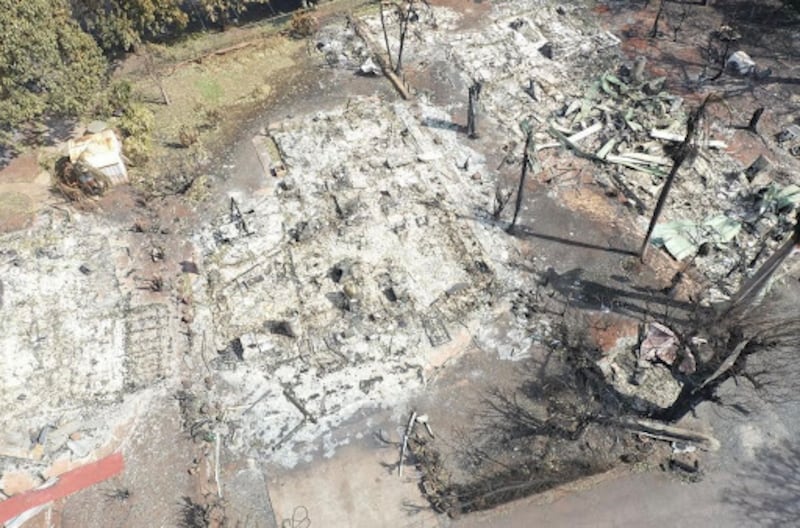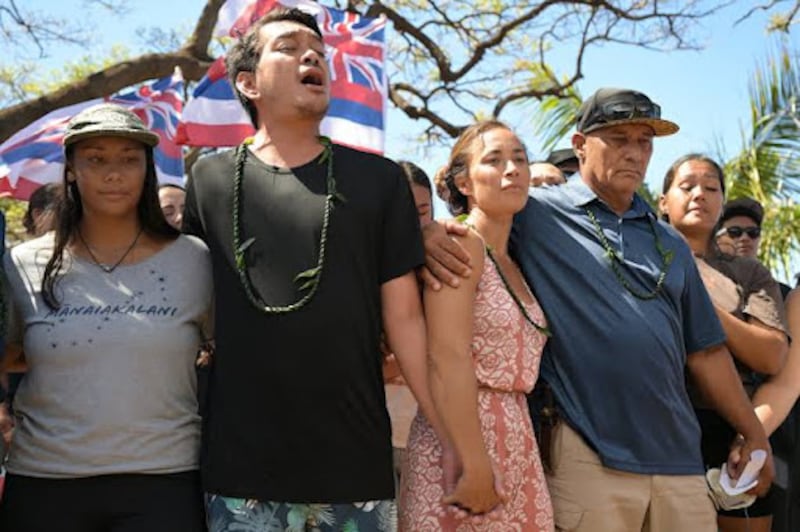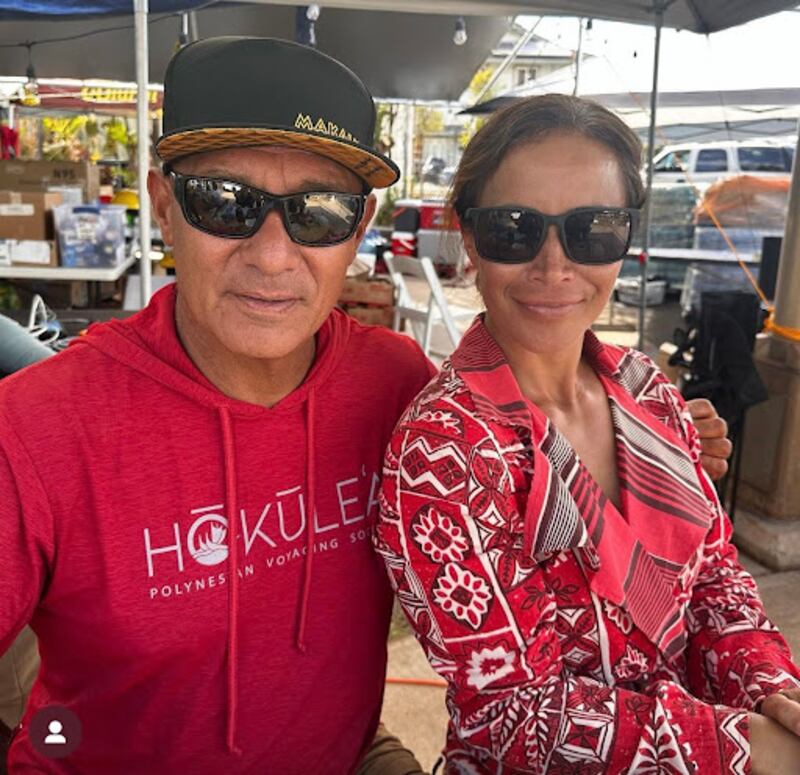It’s been exactly two weeks since catastrophic fires devastated the island of Maui, and officials have finally confirmed those unaccounted for, a total of 850 people. This includes the rising death toll, which sits at 115, with just 35 victims identified.
United States President Joe Biden has told survivors of Hawai’i’s deadly wildfires that the US nation “grieves with you” as he promised federal assistance “for as long as it takes”.
Biden arrived in the ruins of the historic town of Lāhainā where Kānaka Māoli are among the hardest hit.
Standing near a burnt but still standing 150-year-old Banyan tree, the president acknowledged the “overwhelming” devastation but said that Maui would persevere through the tragedy.
As its survivors pick through the pieces, lingering questions remain unanswered such as how did it start in the first place and how did it spread so quickly?
‘Living their worst nightmare’
The devastation though has brought Kānaka Māoli ohana whānau together to defend their āina, whenua against another threat.
Lāhainā-born Tiare Lawrence says her family members have been living their worst nightmare, “just to see the places that we built, made so many memories go up in flames has been pretty heartbreaking.”
Her family home that housed five generations in Lāhainā has been lost, as well as her sister and brother’s home.
“So it’s a really sad time. you know, we are such a tight-knit strong community.”
She counts it as miraculous that her brother and her uncles got away with their lives, when so many didn’t. However, in the hours and days after, she says they were left fending for themselves.

Mauna Medics Healing Hui volunteer Kahala Johnson was part of the support that initially arrived. He flew in from Ōahu to be there.
“Those who have survived the fires and are attempting to restore a sense of stability and security in their lives are doing these fantastic jobs of community organising, alongside other organisations and grassroots efforts,” Johnson says.
Johnson has ancestral ties with Maui and says, despite the devastation around them, they were finding comfort in one another.
“We’ve been able to supply them with medical first aid kits, working with other nurse practitioners, doctors, and other traditional Hawaiian healers, to be able to get everyone the full broad spectrum of care that’s needed at this time.”
Investigation on how the fire started is ongoing but a Facebook video posted on 08.08.2023 EST by Shane Treu showed a broken power line that had gone down just after 6am.
The downed powerline can be seen sparking up, which led to a small brush fire.
Dry brush created a situation
The fire department had it contained but then gale-force winds swept the island setting it alight. On top of that there were road closures, known water shortages and little or no comms according to locals and it rapidly descended into utter chaos.
Lawrence says, “(In) Lāhainā there was a big sugar plantation that occupied most of west Maui, but in pineapple and sugar, a lot of those lands are now in the hands of development and real estate interests.”
“They have been waiting for those lands to get rezoned to develop gentleman’s estates. They’re dry brush, they have created a situation for these massive fires to occur,” Lawerence says.
Lawrence is a high-profile community leader and has already raised US$4 million for families affected.
She’s a kaitiaki, a guardian committed to traditional land use and ownership. She argues the fires are the price of climate change.
“Climate change is definitely affecting Hawai’i. We’re seeing it especially on our long island nations where our seas are rising but we are experiencing longer summers, longer drought periods, and then during the winters we’re having bigger storms.”
Accountability calls
For years Lawrence says her community has been calling out historical land and water rights issues that have plagued Lāhainā but now wants accountability.
She posted to social media calling out for change from exploitation by corporations and water theft.
At the end of the video she seems hopeful and says “Lāhaina is abundant and will return to her glory.”
Lāhainā was prosperous, lush and super popular with tourists, and for Kānaka Māoli it has huge cultural significance, from sacred sites that include ancient food baskets and a freshwater pond Mokuhinia - and Moku’ula island, the home to the Ali’, the high chiefs of Pi’ilani in the 16th century. It was the first capital of the kingdom of Hawai’i where King Kamehameha unified the islands pre-colonisation.
Kānaka Māoli priced out
The main street, Front St, is what linked the past to the present, with historical buildings from various eras, thus tourism had become king, so much so that Kānaka Māoli were priced out of their own land and forced to depend on imported food.
Lawrence says “when people think of Lāhainā they think tourism but behind all the tourism is a very large, strong native Hawaiian community, and we come from more than seven plus generations living in west Maui. There’s so much history, so much mo’olelo (cultural stories) that come from Lāhainā. We just want to make sure that we protect the stories and the sacred spaces that I’m not going to say once existed, because they are still there. The āina is still there and so we just need to bring ai and life back into those lands.”
Lawrence’s uncle, a respected elder and surf legend Archie Kalepa’s front yard serves as a distribution centre for food and supplies.
Realtors ‘swooping in’
He told the Washington Post that there’s another issue facing Kānaka Māoli.
Kalepa says “my heart has been pulled to land grabbing and those are really hard issues and those could be offending to some people but there is a sense of spirituality that is connected to this land by native Hawaiians.”
Archie is ninth generation and āina or land means everything.
Lawrence says that right now real estate agents are swooping in on ohana whanau at their most vulnerable.
“Lāhainā is not for sale, and as a community, multi-generational families, we will stay united, and we will do whatever it takes to save our hometown, from land speculators.”

Locals have started a petition to stop predatory land grabs and conditions that they would like officials to meet for the rebuild of the historic town.
In a state address on Friday, Hawai’i governor Josh Green vowed he would do everything in his power to build Lāhainā with the people of Lāhainā.
However, Lāhainā Kānaka Māoli leaders weren’t convinced, gathering together showing their disappointment that developers and government officials were already discussing a new town without them.
The estimated cost is in the billions (US) while Kānaka Māoli say they’re in no mood to sell up or sell out.
Lawrence says “We’re gonna get through this. and that we have to remain together in unity and just really, just stay together. we’re one big ohana (family) and that’s how it’s going to be and we’re going to continue to fight to protect Lāhainā.”



